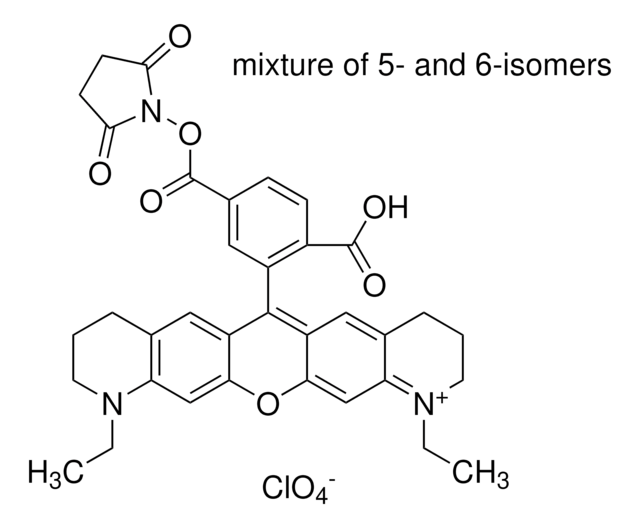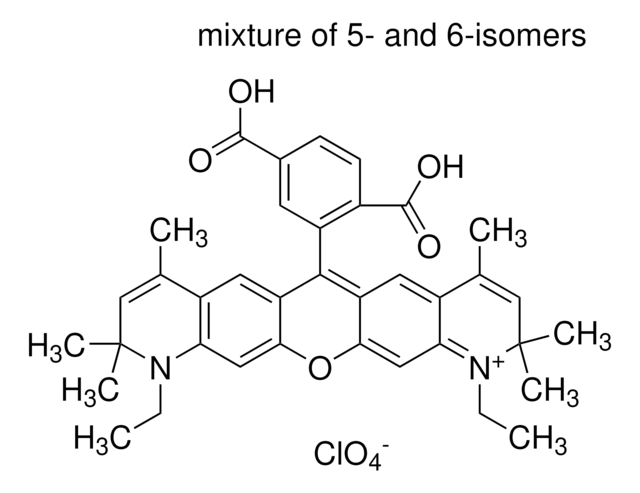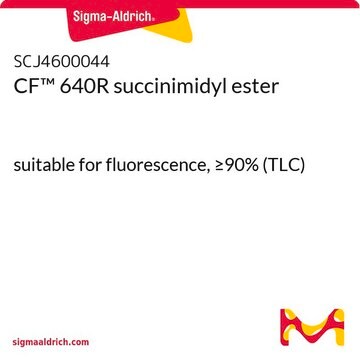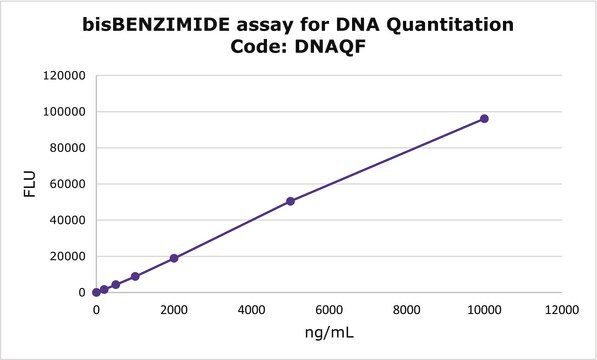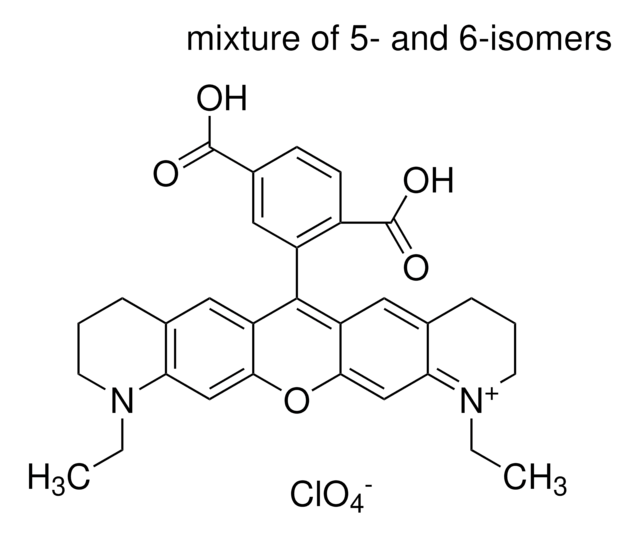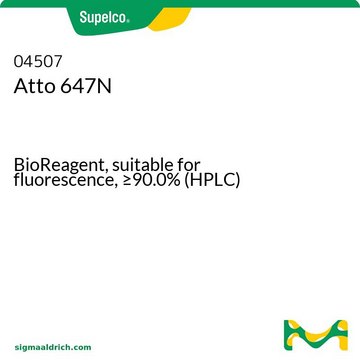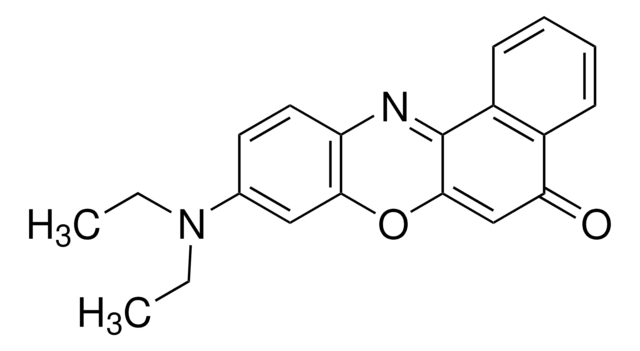06699
Atto 532
BioReagent, suitable for fluorescence, ≥90% (HPCE)
About This Item
Polecane produkty
linia produktu
BioReagent
Próba
≥90% (HPCE)
producent / nazwa handlowa
ATTO-TEC GmbH
fluorescencja
λex 533 nm; λem 560 nm in 0.1 M phosphate pH 7.0
przydatność
suitable for fluorescence
temp. przechowywania
−20°C
Opis ogólny
Zastosowanie
Atto 532 has been conjugated with the secondary antibodies for STED (stimulated emission depletion) microscopy and immunofluorescence studies.
Informacje prawne
Kod klasy składowania
11 - Combustible Solids
Klasa zagrożenia wodnego (WGK)
WGK 3
Temperatura zapłonu (°F)
Not applicable
Temperatura zapłonu (°C)
Not applicable
Środki ochrony indywidualnej
Eyeshields, Gloves, type N95 (US)
Certyfikaty analizy (CoA)
Poszukaj Certyfikaty analizy (CoA), wpisując numer partii/serii produktów. Numery serii i partii można znaleźć na etykiecie produktu po słowach „seria” lub „partia”.
Masz już ten produkt?
Dokumenty związane z niedawno zakupionymi produktami zostały zamieszczone w Bibliotece dokumentów.
Klienci oglądali również te produkty
Produkty
Pomiar czasu życia fluorescencji ma przewagę nad pomiarami opartymi na intensywności. Zastosowania obejmują testy czasu życia fluorescencji, wykrywanie i FLI.
Nasz zespół naukowców ma doświadczenie we wszystkich obszarach badań, w tym w naukach przyrodniczych, materiałoznawstwie, syntezie chemicznej, chromatografii, analityce i wielu innych dziedzinach.
Skontaktuj się z zespołem ds. pomocy technicznej
